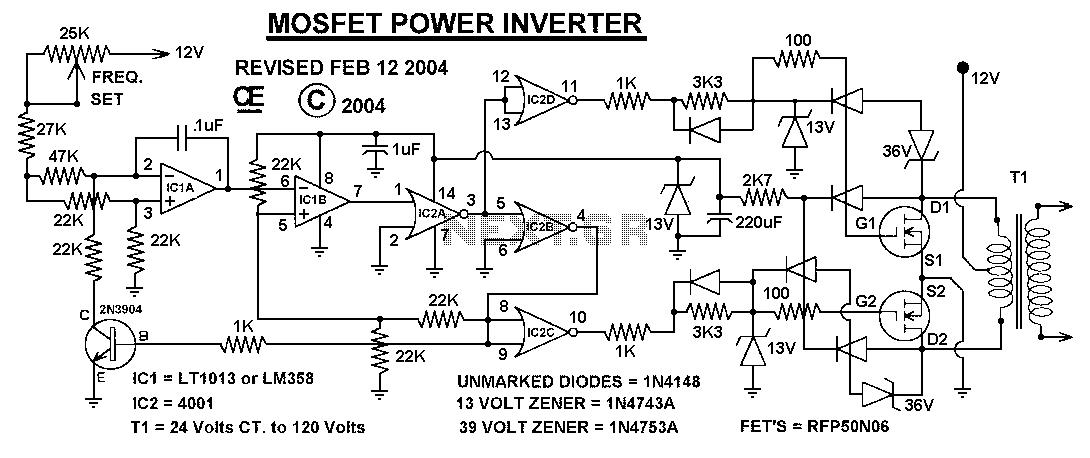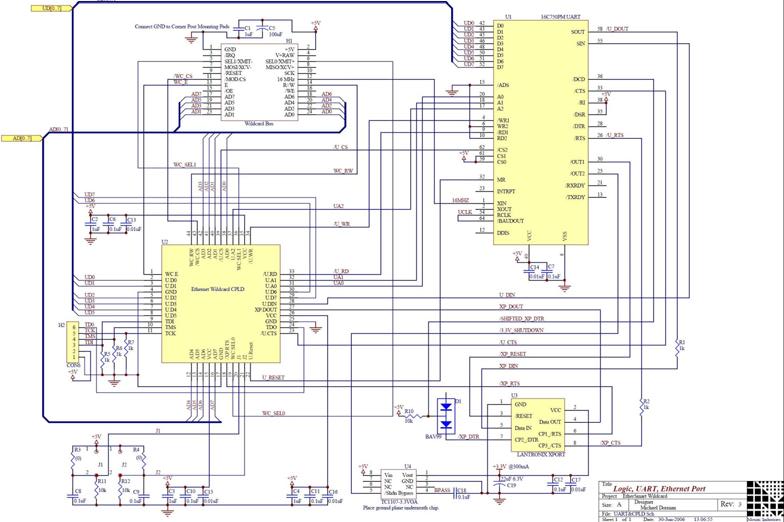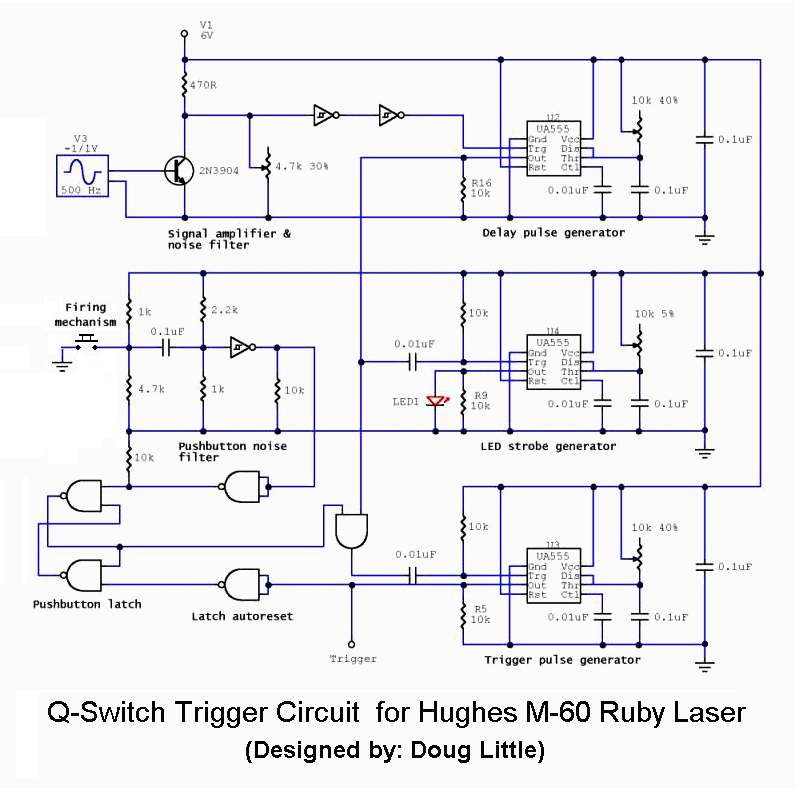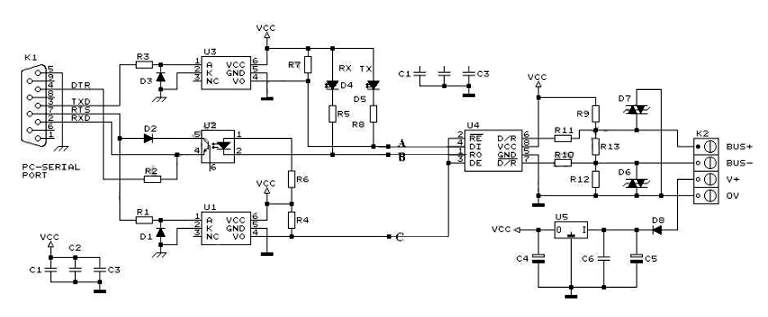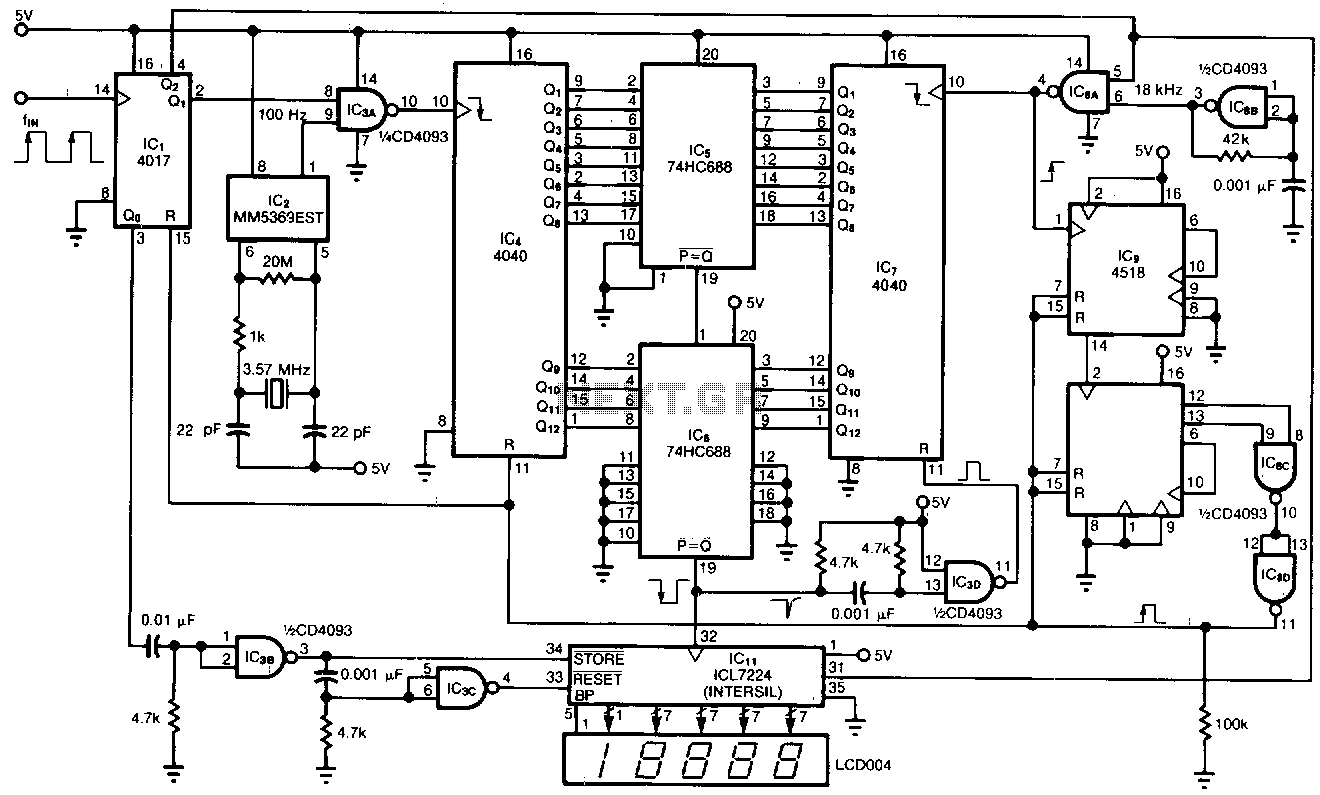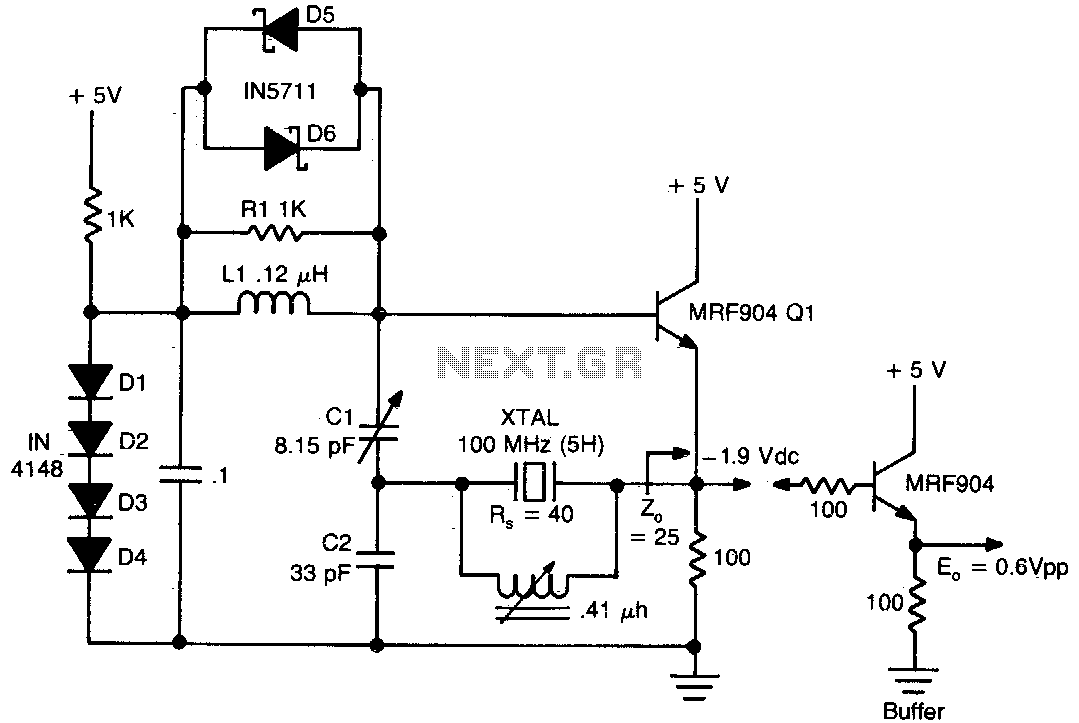
Frequency counter Oscillator schematic
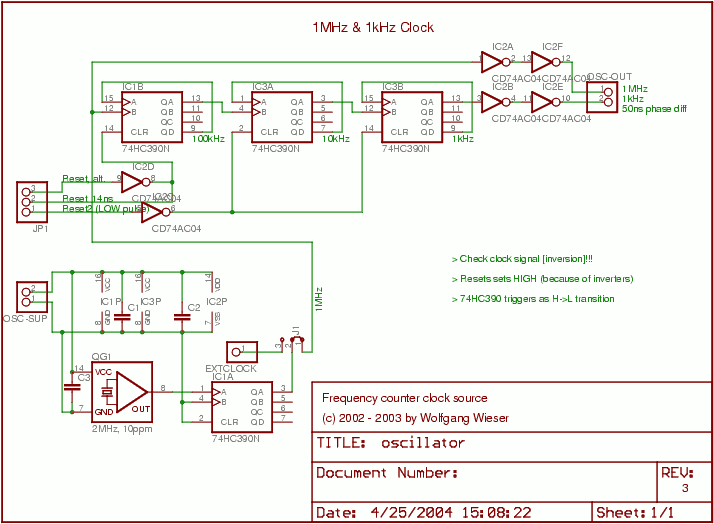
The oscillator generates a 1 MHz and a 1 kHz clock signal. The 1 MHz clock serves as the primary clock for the microcontroller and provides a time base for millisecond measurements. A 2 MHz signal is divided by 2 to ensure a 50% duty cycle. Three half HC390 counters are utilized as dividers by 1000 and can be externally reset. This feature is essential to ensure that the millisecond timer begins operation at the appropriate time. AC04 components are employed as drivers and buffers. Connector J1 permits the option to use an external clock.
The oscillator circuit is designed to produce two distinct clock frequencies: 1 MHz and 1 kHz. The 1 MHz clock signal is critical for the operation of the microcontroller, providing the necessary timing for processing instructions and executing tasks. Additionally, this clock serves as a time base for millisecond measurements, which are essential for time-sensitive applications.
To achieve the required 50% duty cycle, a 2 MHz clock signal is generated and then divided by 2. This division can be accomplished using a flip-flop or a frequency divider circuit, ensuring that the output maintains the desired duty cycle for reliable operation.
The design incorporates three half HC390 binary counters configured to divide the frequency by 1000. This division is essential for generating the 1 kHz clock signal from the 1 MHz source. The capability to externally reset these counters allows for greater flexibility in timing applications, ensuring that the millisecond timer can start precisely when needed, which is crucial for accurate timing and event measurement.
In addition to the frequency division, AC04 integrated circuits are used as drivers and buffers. These components are instrumental in ensuring signal integrity and providing sufficient drive capability for the connected loads. The use of buffers helps to isolate the oscillator from the rest of the circuit, preventing loading effects that could alter the frequency or duty cycle.
The inclusion of connector J1 provides the option to utilize an external clock source, allowing for adaptability in various applications. This feature can be particularly useful in scenarios where synchronization with other systems is required or when a specific clock frequency is needed beyond the internal capabilities of the oscillator circuit.
Overall, this oscillator circuit is a versatile solution for generating precise clock signals and ensuring accurate timing in microcontroller-based systems.The oscillator provides a 1MHz and a 1khz clock. The 1MHz clock is used as the clock for the microcontroller and as timebase for millisecond measurement. I use a 2MHz and divide it by 2 in order to guarantee a 50% duty cycle. Then three halve HC390 are used as divider by 1000 which can be externally reset. This is necessary to make sure the millis econd timer starts running at the time it is needed. AC04 are used as drivers/buffers. J1 allows the use of an external clock. 🔗 External reference
The oscillator circuit is designed to produce two distinct clock frequencies: 1 MHz and 1 kHz. The 1 MHz clock signal is critical for the operation of the microcontroller, providing the necessary timing for processing instructions and executing tasks. Additionally, this clock serves as a time base for millisecond measurements, which are essential for time-sensitive applications.
To achieve the required 50% duty cycle, a 2 MHz clock signal is generated and then divided by 2. This division can be accomplished using a flip-flop or a frequency divider circuit, ensuring that the output maintains the desired duty cycle for reliable operation.
The design incorporates three half HC390 binary counters configured to divide the frequency by 1000. This division is essential for generating the 1 kHz clock signal from the 1 MHz source. The capability to externally reset these counters allows for greater flexibility in timing applications, ensuring that the millisecond timer can start precisely when needed, which is crucial for accurate timing and event measurement.
In addition to the frequency division, AC04 integrated circuits are used as drivers and buffers. These components are instrumental in ensuring signal integrity and providing sufficient drive capability for the connected loads. The use of buffers helps to isolate the oscillator from the rest of the circuit, preventing loading effects that could alter the frequency or duty cycle.
The inclusion of connector J1 provides the option to utilize an external clock source, allowing for adaptability in various applications. This feature can be particularly useful in scenarios where synchronization with other systems is required or when a specific clock frequency is needed beyond the internal capabilities of the oscillator circuit.
Overall, this oscillator circuit is a versatile solution for generating precise clock signals and ensuring accurate timing in microcontroller-based systems.The oscillator provides a 1MHz and a 1khz clock. The 1MHz clock is used as the clock for the microcontroller and as timebase for millisecond measurement. I use a 2MHz and divide it by 2 in order to guarantee a 50% duty cycle. Then three halve HC390 are used as divider by 1000 which can be externally reset. This is necessary to make sure the millis econd timer starts running at the time it is needed. AC04 are used as drivers/buffers. J1 allows the use of an external clock. 🔗 External reference
